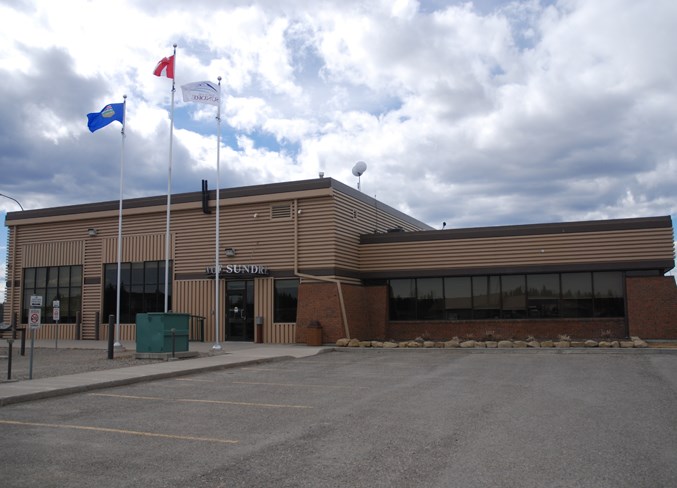There is a big difference between projects identified in the municipality’s multi-year capital plans and those requested specifically by residents in a certain part of town, said Linda Nelson, Sundre’s chief administrative officer.
Sundre homeowner Ray Sharp recently expressed a concern that while he and neighbours years ago paid a local improvement tax that amounted to many thousands of dollars above and beyond their regular property taxes to pave Fourth Avenue SW, businesses west of the second bridge along Main Avenue — which is now undergoing substantial upgrades — did not.
“Everybody else has paid for their roads and sewers,” Sharp said during a phone interview, wondering why in this situation that did not seem to apply to businesses.
The primary underlying factor, said Nelson, is the difference between a neighbourhood enhancement project that was requested specifically by residents in one part of town, as opposed to infrastructure maintenance repairs and upgrades that have already been identified in the municipality’s capital plan.
“If a neighbourhood wants, say a sidewalk or a playground or whatever, and it’s benefiting mainly that specific area of the municipality, they can come forward and apply for that project and pay for it themselves through a local improvement tax,” she said.
“There are a lot of rules around the local improvement tax, which is the reason why it should be citizen, or taxpayer, led.”
A local improvement tax is a funding tool that many municipalities used in the past and still sometimes use today. However, there are other sources of revenue now, such as grants that were not previously available, she said.
“I truly believe that a local improvement tax should be driven by the community,” she said.
“If someone is requesting something that benefits only their neighbourhood, they have the right to come forward and request the project and request that it be paid for through a local improvement tax.”
While a municipality can legally proceed with imposing a local improvement tax, there must be at least two-thirds of residents in the affected area that stand to benefit from the project who support the decision. Additionally, there is an option to petition against a proposed local improvement tax, she said.
“It needs to be signed by two-thirds of the owners who would be liable to pay the local improvement tax, and the owners who sign the petition must represent at least half of the value of the assessment — that’s the formula for petition.”
A successful petition means the municipality may not impose a local improvement tax, she said.
“So you can understand now why it should be community- or neighbourhood-driven, because you have to have the support of that neighbourhood in order to be able to impose the tax.”
Responding to the concerns raised, Nelson said administrative staff had investigated past records on the local improvement tax imposed more than 15 years ago for the Fourth Avenue SW upgrade, and that while a petition against the project had been circulated, insufficient support had been expressed.
“More people were in favour of the improvement than there were against it,” she said, adding the process was done legally and within the parameters of the Municipal Government Act.
Sharp had also shared concerns about the window of opportunity to oppose a proposed local improvement tax, and said such matters seem to unfold during the winter when snowbirds fly south.
But Nelson said that regardless of the time of year, there are likely to be residents who are out of town, especially during the summer when many people take their holidays.
“We don’t know when people are on vacation,” she said.
Regardless, the municipality advertises such proposals and follows due process, she said, adding the $2.68-million Main Avenue project was not requested by nearby businesses or residents.
“They didn’t come forward and ask for this — this has been part of our capital plan for years. This is a part of our normal municipal maintenance and repair schedule.”
In addition to repaving the road, which will improve the aesthetic appearance of the municipality, the installation of sanitary, sewer and water mains will improve water pressure and support future development, she said.
Existing businesses are already serviced and will not benefit from the underground upgrades, she also pointed out.
“What will end up happening is, for future development, this will become listed as a project in our offsite levy bylaw, and future developments that will be benefiting from that will be paying for it, not those existing businesses,” she said.
At the time Nelson was interviewed at her office the week before last, she said the municipality had not received any similar concerns from other residents.




